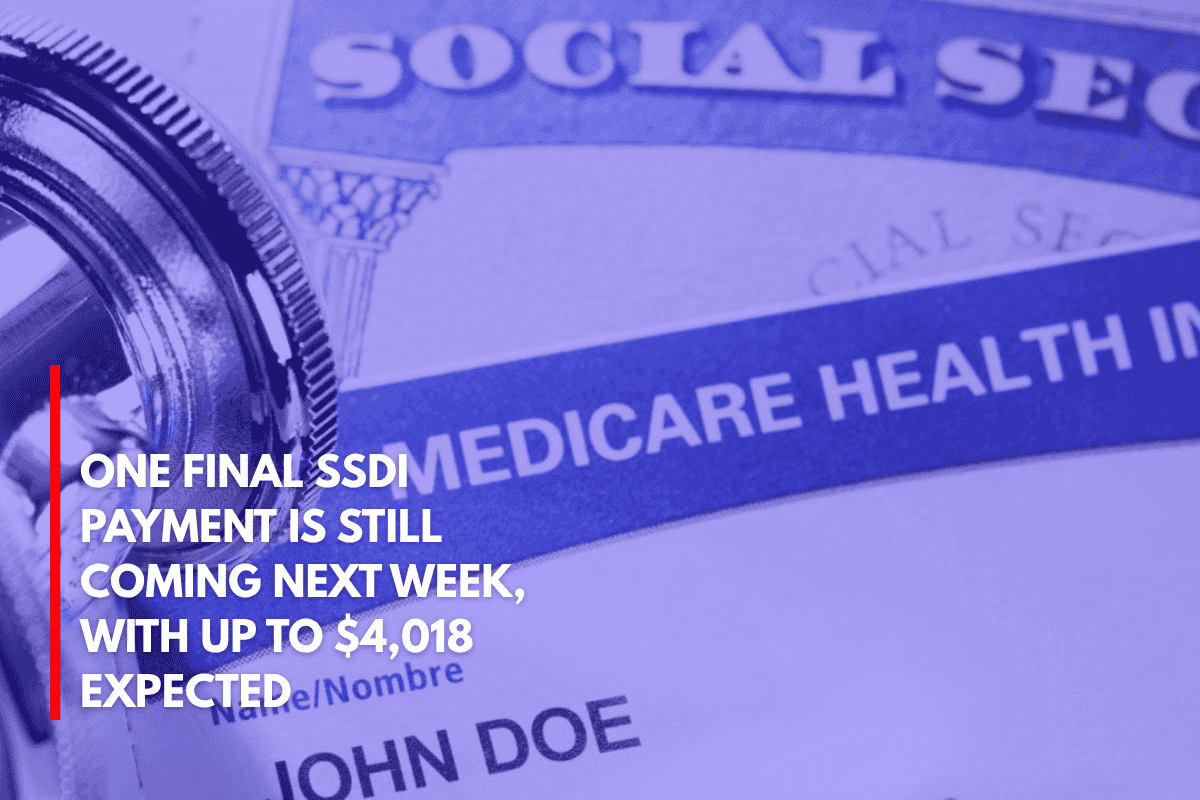The Social Security Administration (SSA) continues its phased distribution of Social Security Disability Insurance (SSDI) payments throughout 2025, as it has done for every month this year.
The payment schedule follows specific dates based on the beneficiary’s date of birth, ensuring a smooth and organized disbursement process. Let’s take a look at what SSDI recipients can expect for July 2025 payments, as well as the requirements for qualifying for SSDI benefits.
Pending Payment for June 2025
Before we get into the July schedule, there is still one June 2025 SSDI payment pending. Beneficiaries whose birthdays fall between the 21st and 31st of the month will receive their payment on Wednesday, June 25.
July 2025 SSDI Payment Schedule
The payment dates for July 2025 SSDI benefits will follow this schedule:
Wednesday, July 9: Beneficiaries born between the 1st and 10th of the month
Wednesday, July 16: Beneficiaries born between the 11th and 20th of the month
Wednesday, July 23: Beneficiaries born between the 21st and 31st of the month
Additionally, there’s a special group of beneficiaries who will receive their SSDI payments on a different date:
Thursday, July 3: Beneficiaries who started receiving payments before May 1997, or those who receive both SSDI and Supplemental Security Income (SSI) will receive their payments on this date.
Who Qualifies for SSDI?
SSDI payments provide financial support to workers with disabilities who have met specific work and tax history requirements. To qualify, an individual must have earned a sufficient number of work credits through their past employment.
The maximum monthly SSDI benefit for 2025 is $4,018. However, this amount is only available to those who have had high earnings and made consistent contributions throughout their careers.
Average SSDI Benefit Amounts
Most SSDI beneficiaries receive less than the maximum benefit. The average monthly payment typically ranges between $1,580 and $1,751, depending on the individual’s work history and family situation. The SSA also considers the family composition of the beneficiary, which can adjust the final benefit amount within the established legal limits.
Eligibility Requirements for SSDI
The SSDI program is designed for workers who have accumulated enough work credits before becoming disabled. To qualify, the disability must prevent the individual from performing substantial gainful activity (SGA). This means that the disability must significantly limit the ability to perform work-related tasks.
There are strict requirements for disability eligibility:
-The disability must be formally diagnosed and expected to last at least one year or result in death.
-The applicant must have worked for a minimum number of years before the onset of their disability. This number varies based on age, with younger workers needing fewer work credits to qualify.
-The disability must be severe enough to prevent the person from engaging in any substantial work activity, even if it’s different from their previous job.
The SSA uses a residual functional capacity test to assess whether an individual can perform any meaningful work despite their disability.
Income Limits for SSDI Eligibility
Income plays a critical role in determining SSDI eligibility. In 2025, applicants must not exceed certain income limits set by the SSA. If an individual’s income exceeds these limits, they may no longer qualify for SSDI benefits.
For non-blind individuals, the Substantial Gainful Activity (SGA) limit is $1,620 per month. If a beneficiary earns more than this amount, they may be considered engaged in substantial work activity, and their benefits could be suspended.
For legally blind individuals, the SGA limit is $2,700 per month. As with non-blind individuals, the SSA evaluates income based on gross earnings before taxes. However, disability-related expenses, such as specialized transportation or support services, may be deducted before determining if the income limit is exceeded.











Leave a Reply